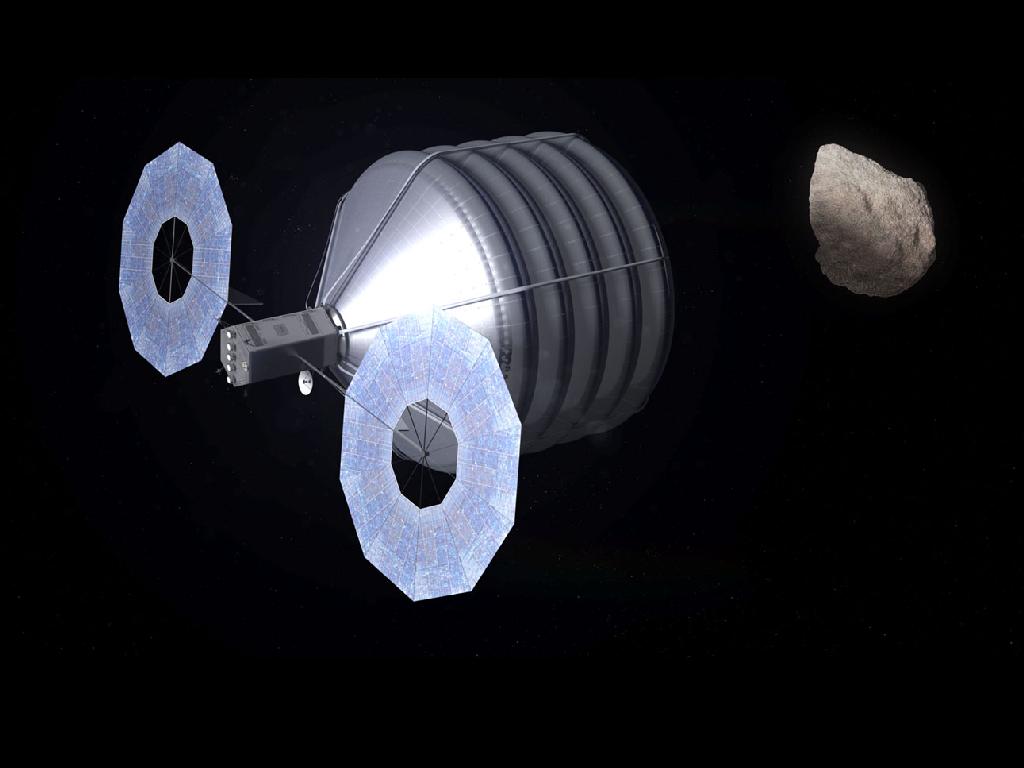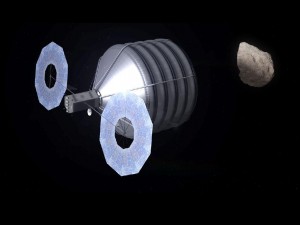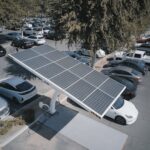Most of you, my readers, are too young to remember the old Perry Como song “Catch a Falling Star” but I think the lyric captures the mission that NASA is proposing. Described as a “capture and redirect” of an asteroid by a robotic spacecraft followed by a visit to the asteroid by astronauts, one wonders how this represents a step forward in our human space endeavor. After all there are a number of private enterprise space adventurers planning to capture asteroids and mine them to make money.
One justification comes from a NASA spokesperson who has wrapped this mission in the sacred cloak of saving civilization from near-Earth objects that could collide with the planet such as the one over Chelyabinsk on February 14 of this year. The rationale would be to build and demonstrate a technology solution for identifying, targeting and capturing Earth-threatening space rocks and moving them out of harms way.
What are we expecting in terms of new technology from such a mission? NASA intends to build what they are calling high-powered solar-electric propulsion (SEP) for the purpose of achieving rendezvous, capture and redirect, and state that without this technology the mission would not be possible. Once demonstrated SEP would be used for future telecommunications satellites and other Deep Space mission objectives.
So what is SEP? You may know it by its other name, ion propulsion, a system that NASA has successfully demonstrated with Dawn, the robotic spacecraft that recently visited Vesta and is now on its way to Ceres in the Asteroid Belt. So if we have already shown that ion propulsion works what needs further testing? Is there something different about the SEP planned for the mission to capture an asteroid?
It appears there is because calling it just SEP is actually a misnomer. What NASA intends to deploy is a hybrid chemical-SEP system. Chemical rockets would lift heavy payloads of components from the gravity well of Earth to low-Earth orbit. You couldn’t use SEP to do that. Once fully assembled and fueled SEP would be deployed to push the spacecraft into higher and higher orbits. This would be a slow process that would take several months. Once the spacecraft reached its destination point in Deep Space a chemical rocket with capsule and humans aboard would set off from Earth to rendezvous and dock. There are several potential scenarios that might ensue. The SEP robotic spacecraft could capture the asteroid on its own and bring it to the rendezvous point. Or the two together could use chemical thrust combined with SEP to set off for a rendezvous and capture of the asteroid. Return to Earth would involve an initial chemical rocket burn plus SEP to generate additional thrust. Will the SEP used for this mission differ from Dawn? Quite significantly! It will be much larger using more efficient solar panels and ion thrusters capable of putting out hundreds instead of tens of kilowatts.
What advantage will be gained by developing the chemical-SEP hybrid? The use of chemical rockets to get to low-Earth orbit will give NASA the best bang for the buck, while the deploying of SEP once in orbit will eliminate the need to carry large payloads of chemical fuel for use in spaceflight. This should save a considerable amount of money.
In addition assembling spacecraft for human occupation in low-Earth orbit rather than launching them fully assembled from the Earth surface will give NASA the capability to build heavier, better shielded human space habitats that can initially exploit SEP technology for travel, and later on magneto-plasma or even nuclear-powered propulsion systems.
So “catch a falling star” or in this case “asteroid” may help NASA catapult human voyagers to Mars and the Deep Space beyond. Let’s see if they get the money from Congress to move ahead.

















Smells like another pointless and costly NASA PR boondoggle, but there is a small chance it won’t be. The main trick to economically exploiting anything in space is either extremely high specific impulse, or lots of reaction mass already out of the Earth’s gravity well, i.e., an asteroid with potential fluid constituency. Suppose there were a really big chunk of water ice or frozen methane that could be herded into stable Earth orbit using solar sails or ionic propulsion. Then spacecraft, once in orbit, could rendezvous with the asteroid and in principle take on reaction mass and use solar radiation or nuclear fission for propulsion energy. One could envision robotic systems locating and parking reaction mass asteroids near every likely mission destination. For example, a manned Europa mission might take on robotically pre-positioned return reaction mass in orbit around Europa.
I don’t see any rational role for men in vacuum suits fooling around in EVA mode with a captured asteroid.
The hypothetical mission aims to capture an object with a mass of 500-tons. Objects that might seriously threaten Earth would have masses thousands of times greater. Seems unlikely perfecting any technology that would make sense for a 500-ton object would scale up a thousand times.
I concur with your observations. To me there are better ways for NASA to spend money that this hare-brained enterprise. The human factor shouldn’t even be part of the equation since robotic spacecraft controlled from the ground can do the job without us adding to the cost. If humans are going into Deep Space then we had better perfect propulsion systems and space habitats that get us to where we are going a lot faster and provide closed-environments that can truly sustain us while protecting us from the dangers outside. We aren’t even close to achieving such technology breakthroughs as of yet. Where is VASIMIR or NERVA or any of the propulsion alternatives that humans would need. For robots solar sails and ion propulsion will do just fine. Hardened machines don’t have to hurry. It is us soft humans that need a heck of a lot of protective baggage and the overhead for our space missions is extremely high. If I were NASA I’d be taking the money and putting it into building low-Earth assembly and new propulsion system testing on human space presence while leaving Deep Space to robots.